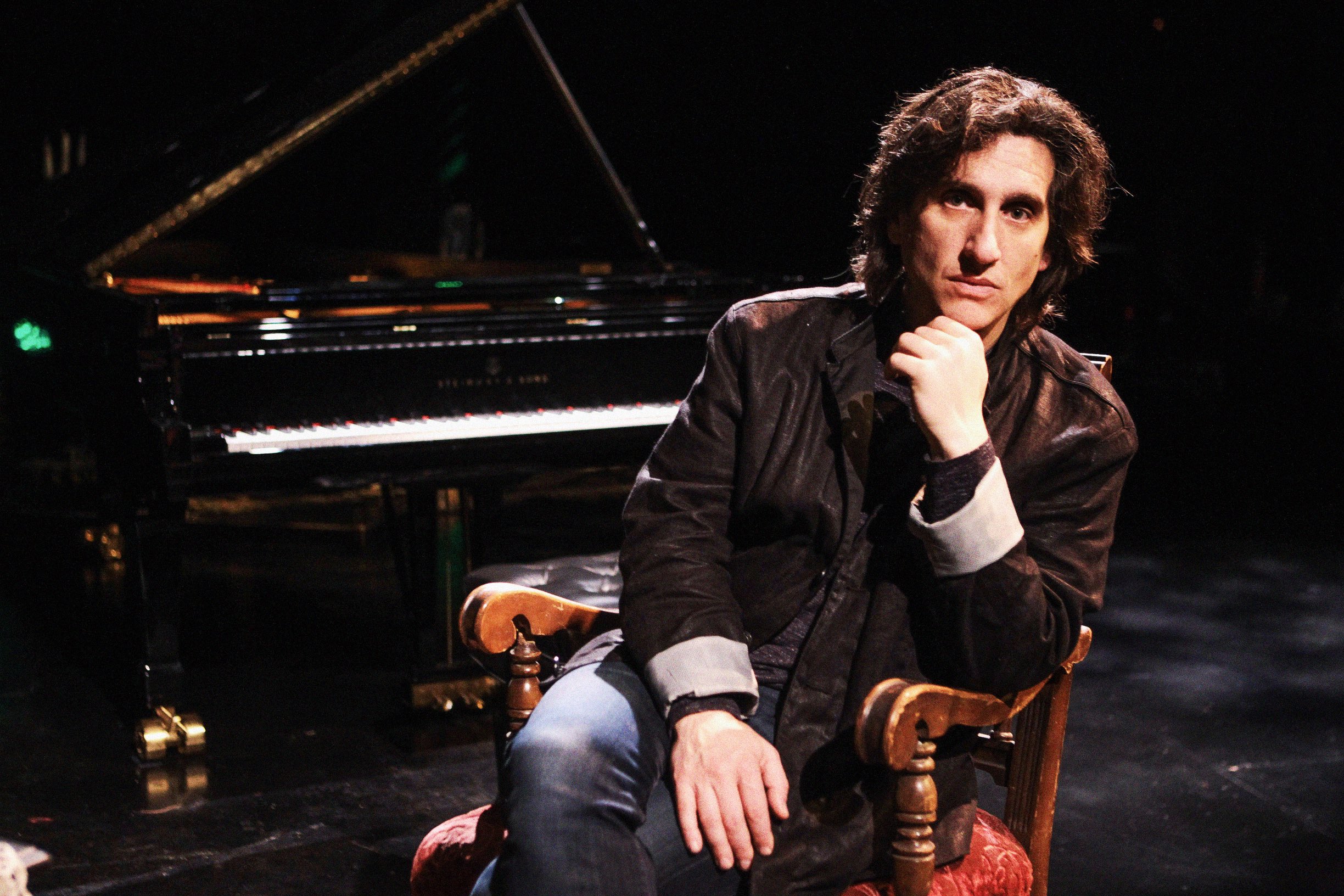Review: "The Scale of Dreams: The Music of Claude Debussy"
Jill Weinlein, Chief Los Angeles Critic
Hershey Felder has brought to life everyone from Beethoven to Irving Berlin in his biographical musicals. Currently at the Wallis Annenberg Center for the Performing Arts, he takes audiences on his own personal journey, while exploring the life and music of Impressionist composer Claude Debussy.
This one man show takes fans to twilight on a bridge over the Seine in Paris with gas lamps flickering. We learn Felder was introduced to Debussy’s music at the age of 6, when he learned to play the immortal “Clair de Lune.” Debussy had an ear for harmonizing, yet also for breaking all the rules.
From the sweeping La mer to the evocative L'après-midi d'un faune and the mystical Clair de lune, this soaring tribute is played on a dark stage with a black grand piano center stage.
Born in 1862, Debussy’s mom was a seamstress and his father owned a china shop. It was his aunt who encouraged him to play music, not his parents. His parents rarely paid attention to him.
As a fat 10 year old boy, he started play Chopin and later entered a music school. They told him he could never be a great talent in France. Boy, were they wrong!
At the age of 17, he falls in love with a wealthy woman, she works, while he composes. Felder takes off the long scarf he is wearing and shapes it into a woman’s face, while tenderly caressing it and presenting a kiss.
Still feeling like a “fat and ugly school boy that his parents didn’t want to see” he engages with nature to compose music. “Nature is the one place that he felt safe,” said Felder. Upon breaking up with this woman after an 8 year relationship, she attempts to kill herself, and the two move on in opposite directions.
Debussy likes the key of E Major “or perhaps not,” Felder informs the audience, as he sits at the piano and has his ear give commands, not his fingers to find the right sound. Felder enhances words in his narration with the color of the notes he plays.
We move on to the 1889 Exposition of Paris and Debussy discovers peaceful sounds in Japanese music. “Music of the East is just five notes,” Felder shares. “it’s arranged in various configurations bringing such peace to their sounds.”
Next he composes an opera, “not like the drama of German Richard Wagner,” Felder says while demonstrating how Debussy was more refined than Wagner “His characters sing and speak as if they are human, not exaggerated” said Felder. This new style made Debussy a celebrity in Paris, yet this opera Pelléas et Mélisande is the only one he writes. “The life of a composer never has any money,” shares Felder.
The inspiration for his piece L'isle joyeuse (The Joyful Island), an extended solo piano piece, is based on the whole-toner scale and there diatonic scale. It was a time when Debussy falls in love with the mother of a young student. Felder describes how the mother and Debussy create a home together on an island, as he plays the piano exquisitely.
Projections on the back screen portray beautiful fireworks, fish and mermaids, birds and snow falling. As the birds were projected flying in flocks across the length of the back screen, and the gentleness of the music Felder performed, I hypnotically was transported into a dream like sleep. In another scene, Debussy’s unusual harmonies blended by the piano pedal feels like snow falling before a Parisian Spring.
When he plays “Le mer” it brings all the various elements of the sea onto the stage. Felder makes it sound as if water is splashing with the undercurrent of the sea.
We learn he had a daughter named Emma Claude who was the love of his life. He affectionately called her “ChouChou.” When she was four years old, Debussy suffered from daily bleeding and died from colon cancer in his home in Paris at the age of 55.
Debussy’s had a gift of traveling out of his mind and into another world when composing. He would bring his listeners into a world of dreams, and his work has strongly influenced a wide range of composers and jazz music is drawn from him.
After every show Felder has the house lights turned on and offers a Q & A session. He described the composer as a “prickly character” whether you know him, or don’t know him, you will like him.
The Wallis just added Felder’s “The Great American Songbook Sing-Along,” a one-night only show on June 11 and the show has been extended through Sunday, June 16, 2019.
Wallis Annenberg Center for the Performing Arts Presents The Samantha F. Voxakis and Karen Racanelli Production of HERSHEY FELDER: A PARIS LOVE STORY
Featuring the Music of Claude Debussy
Written and Performed by Hershey Felder Directed by Trevor Hay
Hershey Felder: A Paris Love Story features scenic design by Felder, lighting and projection design by Christopher Ash, sound design/production management by Erik Carstensen, costume design by Stacey Nezda, wig & hair design by Anastasia Pautova and historical and biographical research by Meghan Maiya, M.A. Assistant lighting designer is Erik Barry, assistant video designer is Brian McMullen and additional movement is by Diego Funes. Louisa Pancoast is assistant to Mr. Funes. Joel Zwick is consulting producer.
Tickets, $35 to $105, are on sale now and, available at TheWallis.org/Debussy. The Wallis Annenberg Center for the Performing Arts is located at 9390 N. Santa Monica Blvd, Beverly Hills. To purchase tickets and for more information, please call 310-746- 4000 or visit: TheWallis.org/Debussy.
